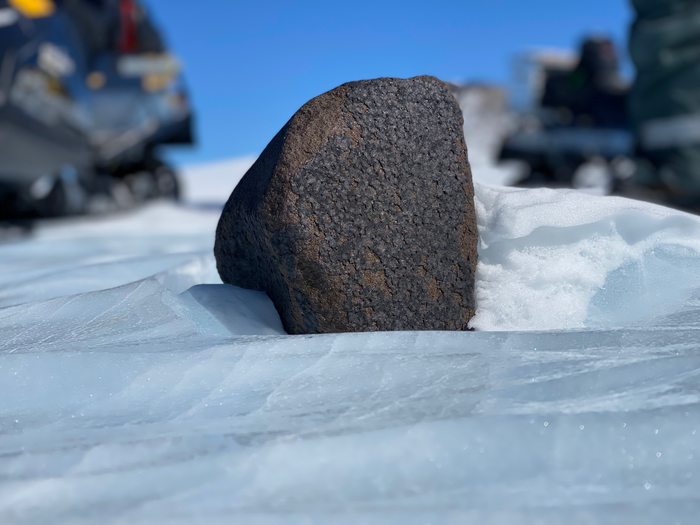Finding A Meteorite Is The Largest During The Last Century In Antarctica

Antarctica is a major destination for scientists when it comes to searching for meteorites. The dark stones stand out clearly as a result of their contrast with the icy surroundings. In addition, the dry climate in it reduces erosion factors to a large extent. And even when meteorites sink into the ice, crashing glaciers often bring them back to the surface.
Despite all these ideal conditions, it is rare to find large pieces of meteorites.
But recently, a group of researchers returned from Antarctica with five new meteorites, including one larger than usual.
The stone weighs 7.6 kilograms, which makes it among the 100 largest samples of meteorites brought from Antarctica over the past century. The importance of this can be understood if we know that about 45,000 samples were brought from the South Pole during that period.
This large space stone will be returned to the Royal Belgian Institute of Natural Sciences, where it will be carefully studied along with other smaller stones. Researchers can learn a lot about the journeys that meteorites took before they reached our planet.
"Size may not matter when it comes to meteorites," says Maria Valdez, an astrophysicist at the Illinois Museum of Natural History. "Even small meteorites can be of great scientific value, but finding a large meteorite like this is really rare and exciting."

Although it is easier to spot meteorites in Antarctica than anywhere else, traveling across the continent is not so easy, given its isolated location and extremely cold climate. The team involved in this discovery spent several days camping out in the open, traveling on foot or using snowmobiles.
It is useful to know the possible locations of meteorites. The researchers used a map published last year that used evidence from satellite imagery, including ice flow, temperature and surface slope measurements, to make informed predictions of where the meteorites would be, with the help of artificial intelligence.
"Going on an adventure to explore uncharted territories is exciting, but we have to deal with the fact that working on the ground is very different from dealing with satellite images," says Vincien Debelle, a geoscientist at the Free University of Brussels.
The map used by the researchers is estimated to be about 80 percent accurate in terms of directions, and its authors estimate that there are more than 300,000 meteorites yet to be found in Antarctica.
Researchers think that we miss a lot of meteorites, especially those rich in iron, despite the favorable conditions to search for them in Antarctica. This is partly because this type of meteorite gets heated up in the sun, melting the surrounding ice and sinking beneath the surface.
There is a new cargo of meteorites ready to be studied more carefully, and the new rocks are supposed to bear traces of the history of our solar system.
"The larger the sample we have, the better we can understand our solar system, and also ourselves," says Valdez.
Source : websites

